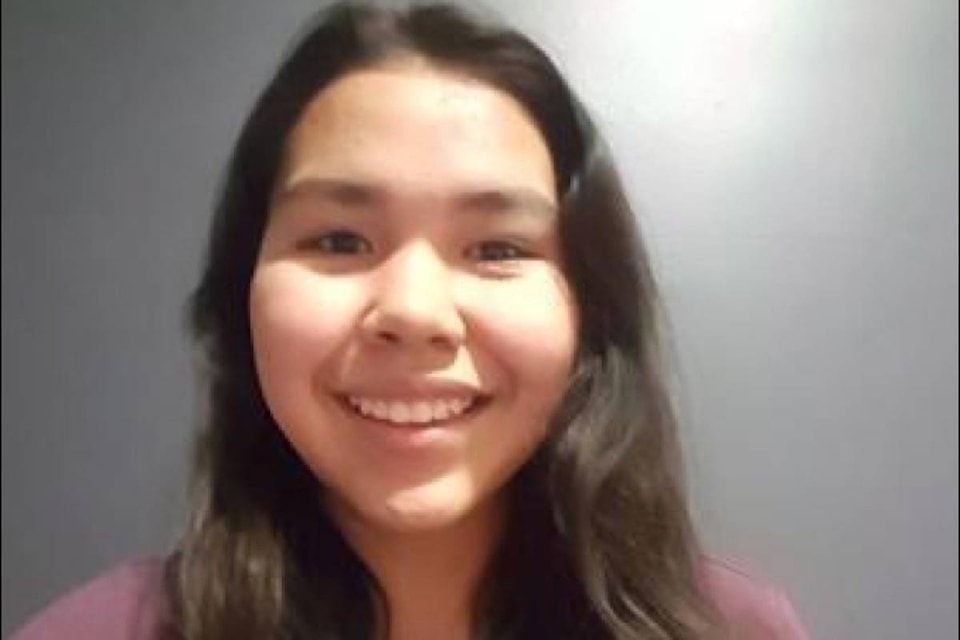A 15-year-old high school student in British Columbia is turning to technology to help address a decades-old problem — how to revive an Indigenous language nearly lost to the residential school system.
Tessa Erickson of the Nak’azdli Whut’en First Nation is creating an app and organizing a summer camp to help get younger people in her central B.C. community speaking the Nak’azdli dialect of the Dakelh language.
“To me, it’s a bit of a symbol,” she said. “The language is really important to me, personally, because it’s a way to connect with my community and really bridge the gap between the generations.”
Members of her nation were fluent in the dialect about three generations ago, before they were sent to residential schools, Erickson said.
The Grade 10 student said she’s been told generations since then were afraid to teach the language to their children.
“They didn’t want the same experiences they went through to happen to their children if they passed on this language that was kind of looked down upon,” Erickson said.
Languages don’t die naturally but are actively snuffed out, usually by colonial forces, said Mark Turin, chairman of the First Nations and endangered languages program at the University of British Columbia.
Bringing them back is an explicitly activist and political act, and one that is key to reconciliation, he said.
“Languages are about a lot more than words and grammar,” Turin said. ”A huge amount of local understanding, of culture, ecology, relationships with ancestors, with the past and with the land is all encoded in language.”
Right now there’s an “exciting energy” across Canada among people doing the work, he added.
There’s some support from government, too.
Ottawa has committed $89.9 million over three years to preserving, protecting and revitalizing Indigenous languages and cultures, and it was announced in June that the federal government would collaborate with Metis, Inuit and First Nations leaders on developing legislation to save and revive their languages.
Prime Minister Justin Trudeau said in 2016 that restoring Indigenous languages is the key to preventing suicides in First Nations communities.
He said Indigenous communities that do a better job of teaching their own language and culture see “massive decreases in suicide rates,” and those languages are an indicator of pride, identity, belonging and culture.
People already working to refresh and preserve mother tongues are using a variety of methods, Turin said. But everyday usage is key to revitalization.
“Tools and technology don’t save languages — speakers do,” he said. ”No app, no online dictionary, no website is going to help bring a language back. That’s about the commitment that people have.”
There are only a few people still alive who fluently speak the Nak’azdli dialect of the Dakelh language, Erickson said, and she’s working with them as she develops her app and plans for summer camps.
The app will be simple, she said, with lessons that teach greetings and give answers for simple questions.
Erickson hopes it will be ready for spring, so kids can use it before heading off to sleep-over language summer camps.
She said the camps will provide pre-teens and teens with an immersive language experience.
Erickson is also looking to improve her Dakelh. She already knows some words and can hold a simple conversation, but said she wants to work on communicating more complex thoughts.
Canada is in a unique position to lead other countries in the process of breathing new life into Indigenous languages, Turin said, adding he can see a future where Indigenous languages are included in this country’s official languages.
“These languages should be encouraged and nurtured and given the resources to thrive in this multicultural and diverse society.”
Statistics Canada reported in 2011 that there were more than 60 Indigenous languages reported, grouped into 12 distinct language families.
In November, Six Nations Polytechnic in southwestern Ontario launched its own app to help people learn the endangered Mohawk language.
— Follow @gkarstenssmith on Twitter
Gemma Karstens-Smith, The Canadian Press
